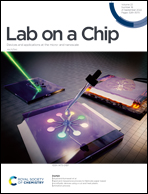Simplifying the complex: accessible microfluidic solutions for contemporary processes within in vitro diagnostics
Abstract
In vitro diagnostics (IVDs) form the cornerstone of modern medicine. They are routinely employed throughout the entire treatment pathway, from initial diagnosis through to prognosis, treatment planning, and post-treatment surveillance. Given the proven links between high quality diagnostic testing and overall health, ensuring broad access to IVDs has long been a focus of both researchers and medical professionals. Unfortunately, the current diagnostic paradigm relies heavily on centralized laboratories, complex and expensive equipment, and highly trained personnel. It is commonly assumed that this level of complexity is required to achieve the performance necessary for sensitive and specific disease diagnosis, and that making something affordable and accessible entails significant compromises in test performance. However, recent work in the field of microfluidics is challenging this notion. By exploiting the unique features of microfluidic systems, researchers have been able to create progressively simple devices that can perform increasingly complex diagnostic assays. This review details how microfluidic technologies are disrupting the status quo, and facilitating the development of simple, affordable, and accessible integrated IVDs. Importantly, we discuss the advantages and limitations of various approaches, and highlight the remaining challenges within the field.

- This article is part of the themed collection: Miniaturised Sensors & Diagnostics


 Please wait while we load your content...
Please wait while we load your content...